Belief in Bodhisattva Avalokiteshvara, or Guanyin Bodhisattva (hereinafter referred to as “Guanyin”), is one of the most popular beliefs in East Asia. Known as an infinitely merciful god, Guanyin’s kind and compassionate expression brings comfort and hope to those in need or suffering from hardship.
“Guanyin,” the abbreviated form of Guanshiyin, literally means “the perceiver of the sounds in the world,” and is the Chinese translation of the Sanskrit name Avalokitesvara.
The image of Guanyin often seen today is a woman in a robe with a soft and graceful posture (photo 1). However, in early Indian Buddhism, Guanyin was mostly represented as a male figure (photos 2, 3 and 4). For example, the Avatamsaka Sutra (which was introduced to China around the second century AD), says: “in the forest by the valley, on a diamond rock, there is a brave man. [He] is the saint of mercy, the endless torch of wisdom, the light of the night, the heavenly clouds, the multiplier of blessings.” The image of Guanyin described here is that of “a brave man.”
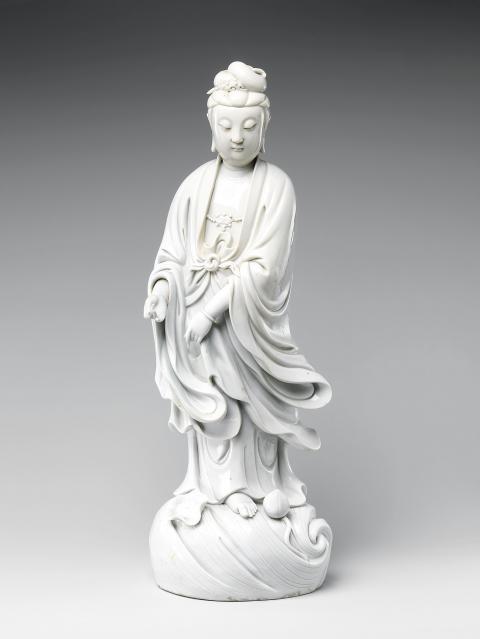
Photo courtesy of Metropolitan Museum of Art照片:美國大都會博物館提供
According to The Lotus Sutra’s Universal Gate Chapter on Avalokitesvara Bodhisattva, there are 32 incarnations of Guanyin — covering both deities and humans, which straddle different ages, genders and social classes. Guanyin is believed to appear in different images according to the unique situation of the person in need. In addition, having fused with Daoism and other folk beliefs localized in China, more images were added to the original Buddhist Guanyin, such as Guanyin as bringer of sons (photo 5), the fish-basket Guanyin, the thousand-handed and thousand-eyed Guanyin, etc, depicting the boundless and varied imagination of the ancients.
As for why Guanyin statues evolved into female images, there has been much speculation. One theory is that the change began in the Tang Dynasty (618-907 AD), when women’s social status was elevated within society. Furthermore, a Tang Dynasty folklore story described how Guanyin used to be a princess, which may have influenced the public to believe Guanyin was a woman.
Another theory is that the expression of compassion in the image of women is particularly able to penetrate the hearts of the public. In the same way, perhaps because the love of a mother is able to arouse common memories and desires, the Daoist Matsu and the Catholic Virgin Mary also attract a great number of believers.

Photo courtesy of Metropolitan Museum of Art
照片:美國大都會博物館提供
(Lin Lee-kai, Taipei Times)
觀世音菩薩(以下簡稱「觀音」)是東亞最普遍的信仰之一,大慈大悲、救苦救難,仰望祂的慈容,讓身陷苦難中的人得到安慰與希望。
現今常見的觀音像,是身著長袍、姿態雍容柔軟的女性【圖一】。然而,在印度的早期佛教中,觀音大多呈男相【圖二、三、四】,例如《華嚴經》(約於西元二世紀傳入中土)所記載「見夫岸谷林中,金剛石上,有勇猛之丈夫,即慈悲之聖者,無盡智炬,作暗夜之光明,一切法雲,覆福芽之增長」,此處的觀音則是「勇猛之丈夫」。
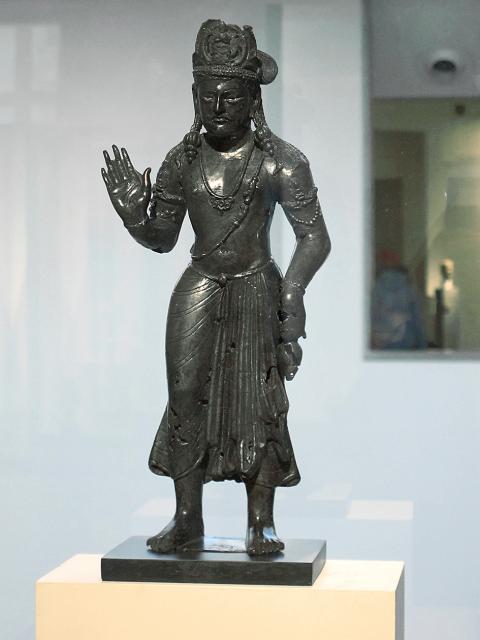
Photo: Wikimedia Commons
照片:維基共享資源
《法華經普門品》更提到,觀音有三十二種化身──涵蓋神與人,以及不同年齡、性別與社會階級──以因應眾生的需要來現身說法。此外,佛教與道教等民間信仰傳說結合後,還出現了送子觀音【圖五】、魚籃觀音、千手千眼觀音等,變化之多,令人讚嘆先民奇幻瑰麗的想像。
至於觀音造像為何演變成以女性形象為主,則有許多種推論。有一說認為此轉變始於唐朝,因當時女性的地位提高,以及民間傳說故事描述觀音原是一位公主,因此民眾相信觀音為女身。
此外,以女性形象來體現「慈悲」,也特別能夠深入人心。或許是因為訴諸慈母般的愛,特別能夠喚起人們的共同記憶與想望,這也或許是為什麼道教的媽祖及天主教的聖母瑪利亞吸引如此眾多的信徒。
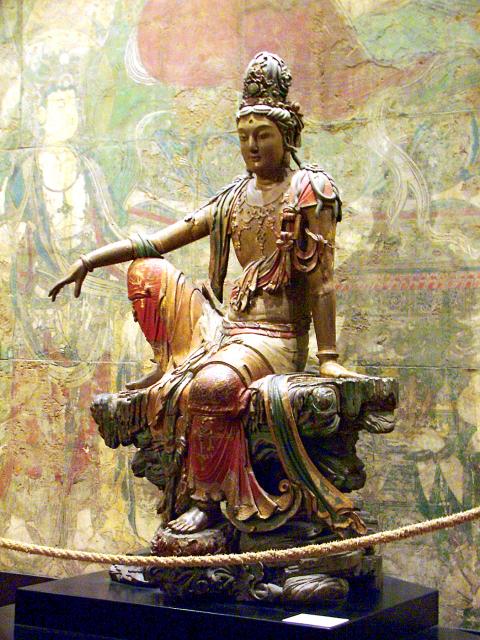
Photo: Wikimedia Commons
照片:維基共享資源
(台北時報林俐凱)
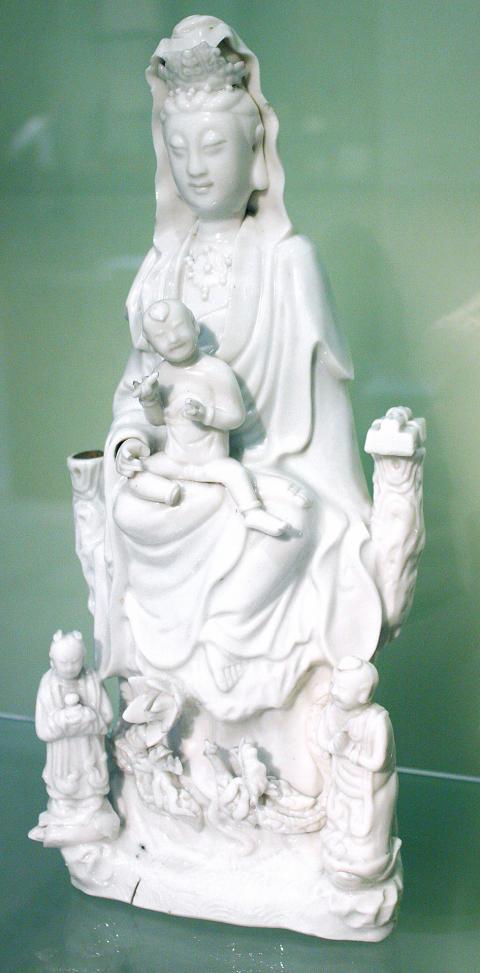
Photo: Wikimedia Commons
照片:維基共享資源
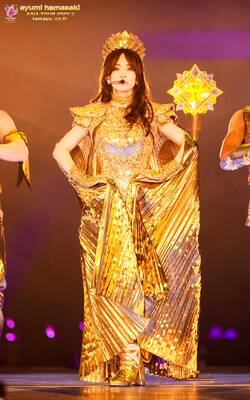
A: Apart from the musical Sunset Boulevard, Japanese pop diva Ayumi Hamasaki is also touring Taiwan after a 17-year wait. She’s holding two concerts starting tonight. B: Ayu has the most No. 1 hits of any Japanese solo artist, with 33 total. A: “Time” magazine even crowned her as “The Empress of Pop.” B: She staged shows in Taipei back in 2007 and 2008, causing an “Ayu fever” across Taiwan. A: Unfortunately, the singer has been deaf in her left ear since 2008, and is gradually losing hearing in her right ear. I’m so excited to see her singing in Taipei again. A: 除了音樂劇《日落大道》,日本歌后濱崎步睽違17年,今晚起在台北熱唱兩場。

Alan Turing, celebrated as the “father of computer science,” was a brilliant mathematician and scientist. Born in London in 1912, Turing showed exceptional talent in mathematics and science from a young age. At 16, he understood Albert Einstein’s work without difficulty. This intelligence carried him through studies at Cambridge University and later at Princeton University in the US, where he further explored complex mathematical theories. In 1936, Turing introduced the concept of the Turing machine, a theoretical device for solving mathematical problems. He described it as having an infinite tape on which symbols could be read, interpreted, and modified. With simple

Denmark’s state-run postal service, PostNord, announced that it would cease letter deliveries at the end of 2025 due to the impact of digitalization. As 95% of its residents now use the Digital Post service, Denmark has seen a 90% decline in letter volumes since 2000, from 1.4 billion to 110 million last year. On top of that, the Postal Act of 2024 removes the government’s obligation to provide universal mail service and puts an end to postal exemptions from value-added tax, raising the cost of a single letter to 29 Danish krone (US$4.20). As a result, PostNord is switching

A: After touring Taipei, the play Life of Pi is now heading to Taichung. You wanna go? B: Did you forget? We’re going to Taipei this weekend to see the musical Sunset Boulevard and go to Japanese pop diva Ayumi Hamasaki’s concert. A: Oh yeah, that’s right. The classic composed by Andrew Lloyd Webber is touring Taiwan for the first time. B: I heard that it’s adapted from a 1950 film with the same title. A: And the show will feature legendary soprano Sarah Brightman, who is finally returning to the musical stage after 30 years. We can’t miss it. A: 在台北巡演後,戲劇《少年Pi的奇幻漂流》本週起將移師台中。要去嗎?